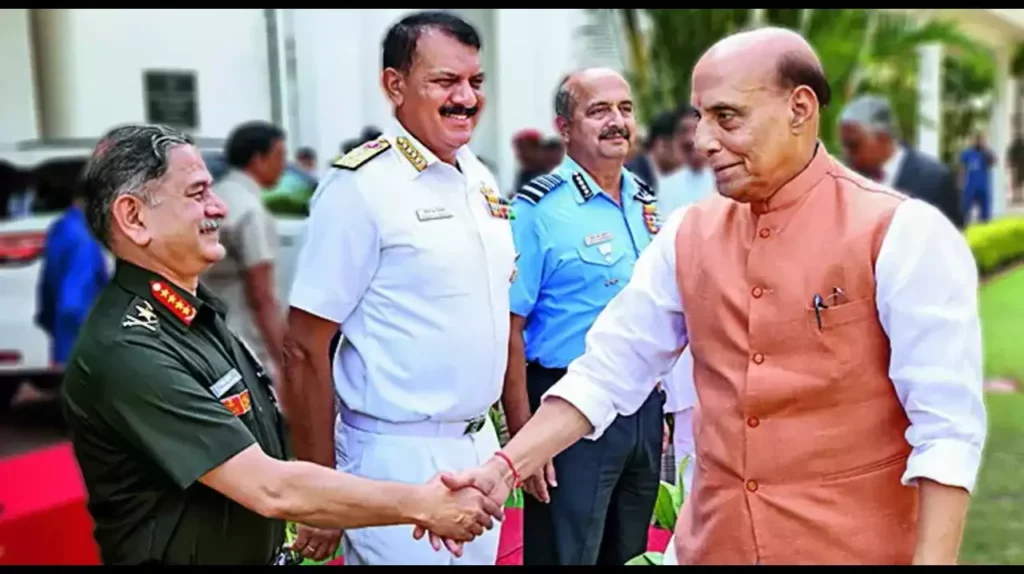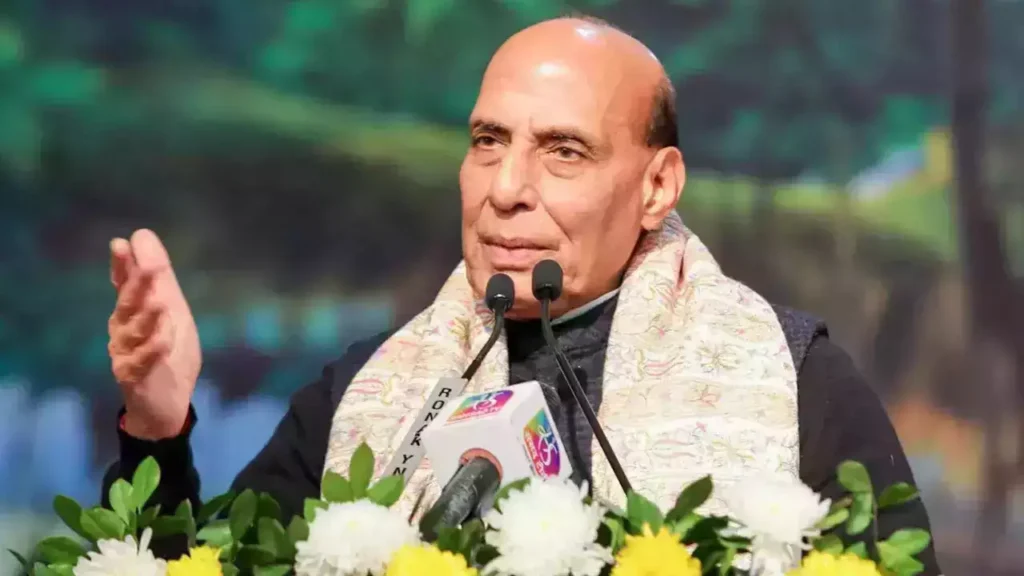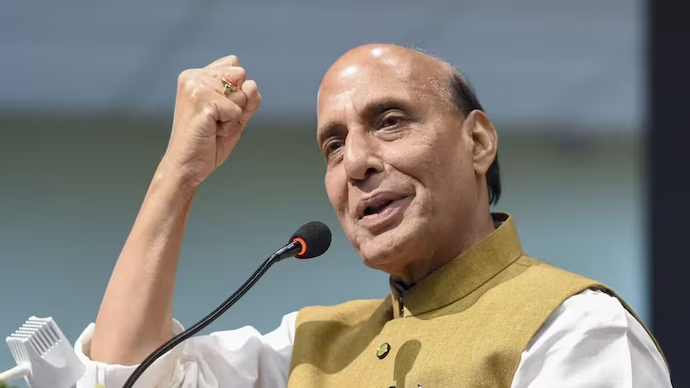| In Short |
| Rajnath Singh’s Emphasis on Jointness: India’s Defence Minister Rajnath Singh stressed the importance of jointness between the Army, Navy, and Air Force to ensure swift and coordinated military actions in response to emerging threats. |
| Focus on Regional Tensions: Singh urged the armed forces to closely monitor developments in neighboring countries, including China and Pakistan, due to ongoing geopolitical tensions and potential territorial disputes |
| Preparedness for Unexpected Situations: The minister highlighted the need for military readiness, advising the forces to be prepared for unexpected escalations or crises that could arise in the region |
| Modernization and Technological Advancements: Singh called for the Indian military to adopt modern technologies like drones, AI, and cyber warfare capabilities to remain competitive in modern warfare |
| Diplomacy and Strategic Alliances: While maintaining military vigilance, Singh emphasized the importance of balancing defense with diplomacy and strengthening international partnerships to safeguard India’s security interests |
In this respect, with the fast-emerging global threat perception coupled with rising tensions in the neighbourhood, Defence Minister of India Rajnath Singh called upon the armed forces of India to be in a state of preparedness. During his recent addresses, he stressed the need for jointness, swift military action, and close surveillance of events in the neighbourhood. With geopolitical tension building upwards, especially in the neighbourhood, his comments have come at an opportune moment to show the gravity of military preparedness.
Increasing Geopolitical Threats and Military Preparedness of India
India’s Defence Minister Rajnath Singh called for a proactive and integrated response mechanism to tackle the emerging threats in the evolving global and regional security matrix. Addressing the top brass of the military, he underlined the need for “jointness” across the services, calling for integrating operations among the army, navy, and air force so that military reactions can come fast and effectively. All this comes when tensions and security anxieties in India’s immediate vicinity have gone up.

The Imperative of Jointness
The call for jointness by Rajnath Singh was an old mantra that has assumed new urgency. Because there are so many branches of the Indian Armed Forces which function largely in an autonomous way, their integration has been seen as part of the imperative of modern warfare. Underlining this aspect, the Defence Minister highlighted that only joint operations can provide a more smooth and coherent method of addressing external threats.

India has been working on introducing change in the military command structure of late with the formation of theater commands. In this regard, the reform aims to introduce integration of operations amongst the three armed services, thus ensuring a unanimous response upon times of crisis. Notably, given such an evolving nature of military threats, where speedy mobilization and coordination become so decisive, the call of the minister in this regard could not have been timelier.
Eye on Neighboring Countries
With tensions simmering in different parts of the region, Singh has also asked the armed forces to continue to monitor the happenings in the neighboring countries, especially with the emergence of unexpected situations. The rising strategic clout of countries such as China and Pakistan has remained a constant source of worry for India.
Rajnath Singh underlined the requirement of being prepared for “the unexpected” by asking the forces to stay stirred over changes in geopolitical environment that might pop up posing a serious challenge to the national security. The warning by the Defence Minister, when there have been recent clashes on the borders and tensions over the borders, was to call on the military to be prepared for rapid escalation.
Technological Advancement in Warfare
The second most important feature in Singh’s address was related to the modernization of military capabilities. A world where technology is swiftly changing the character of war, he said, befits a place where India has to be ahead in both offensive and defensive strategies. The use of drones, AI-driven systems, and cyber warfare has become very critical in modern conflicts, for which Singh called upon the forces to embrace these technologies while being aware of the possible threats from adversaries.
While new-generation fighter jets, naval ships, and missile systems have been inducted into service as part of the modernization drive, the requirement to develop better cyber capabilities and enhance battlefield intelligence remains. Singh’s call for swift action is, thus, an invitation to upgrade these technological infrastructures.
Diplomatic Balancing Act
While the focus indeed is on readiness and military preparedness, Singh nonetheless underlined the role of diplomacy vis-à-vis regional powers. India enjoys a multifaceted relationship with its neighbors, particularly China, whereby a judicious mix of diplomacy and defense is called for. He reiterated that while strategic partnerships would be welcome, India had to be vigilant about potential threats.
India has also been consolidating its relations with global powers like the United States, France, and Japan, putting extra emphasis on defense cooperation. Joint exercises, defense agreements, and intelligence sharing have formed the core of India’s military strategy in protecting its borders and maritime interests.
Time for Fast-Motion
Rajnath Singh’s call for rapid action is not mere being reactive but preparedness to act preemptively in times of crisis. The capability of mobilizing forces in quick time in a coordinated manner is the high point in maintaining national security. With geopolitical events often unpredictable, Singh has instructed armed forces that India must, at all costs, be ready to defend its interests.
Singh has time and again spoken about how India looks for peace but will not hold itself back in defending, if need be. This assertion has found great traction within the Indian defense fraternity in the context of an increasingly tense regional and uncertain global environment.
Through his recent addresses, Rajnath Singh brought military preparedness once again to the center as India’s defense strategy. The emphasis on jointness and swift military action, coupled with a close eye on the goings-on in the neighborhood, underlines the requirement of India to be prepared for any emerging challenge. Modernization of armed forces and strategic alliances continue apace, but the message from the top is clear: stay vigilant, stay prepared, and be ready to act.
For Latest News Updates, Click Here.
